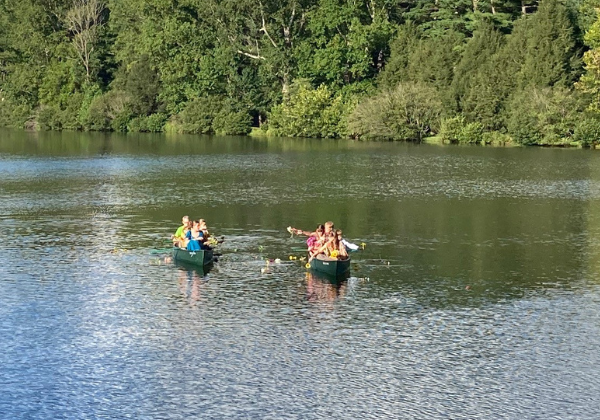Last week, I had the honor of serving as the celebrant for a memorial celebration of life for Todd Walker, a beloved member of the Asheville community. I’d known Todd and his wife, Katie, for 20 years through their friendship with my high school best friend. Todd was a doting father, devoted husband, gifted acupuncturist and healer, and a salt of the earth guy who everybody adored. You can read his obituary here.
His death, by suicide, came as a shock to most people who didn’t know his struggles. One of the gifts of his memorial service is that his community learned about his challenges—he had been struck by lightning not once, but twice, and had suffered incapacitating migraines for years and was never able to find sustainable relief despite exhausting all of his options through both Western and Eastern medicine. His pain was so great that one day, he just needed it to stop.
My book Sacred Celebrations: Designing Rituals to Navigate Life’s Milestone Transitions is coming out in November and Chapter 12 is devoted to rituals for death and loss. As I’ve been processing Todd’s death and the beautiful memorial service that we co-created (there were probably a dozen of us who came together to help create a magical day), I realized I’d like to share with you why funerals matter so much.

Photo: Katie and her daughters performed a flower release ritual at the end of Todd’s Celebration of Life on Lake Eden in Black Mountain, North Carolina.
Here’s an excerpt:
Death rituals are important for a number of reasons.
- The ritual of a funeral or memorial services acknowledges the reality—and finality—of death. When a loved one dies, it can feel surreal, as though living in an alternate reality. Denial can set in, and one might think the person is away on a trip or asleep in the other room. Physically attending a funeral and seeing the casket or the urn with ashes can help shift from the feeling of living in a dream, to the sad new reality of life without this beloved person inhabiting their earthly body. For me, burying my mother’s ashes in the cemetery next to my father’s had a very gut-wrenching and poignant finality. It was at that moment I knew I would never see either of them again.
- It provides a safe space for deep grief to be summoned and expressed. People are expected to cry, to wail, and to express lament and sadness at a funeral. It’s one of the few publicly sanctioned places in our culture where it’s not only okay to fall apart but expected. The notions of “buck up” and “be strong” don’t apply here. And thank goodness. A person may have to be strong to go back to work or help the kids return to school, but in the days immediately after a loss, it’s healthy to express the full range of the emotional experience.
- It allows the immediate family and friends to receive support from their community. When a loved one dies, it can feel like the loneliest place in the world. But the celebration of life is an excellent place to allow others to tell what the beloved meant to them. People tend to come from various places in the person’s past for funerals and share stories and happy memories of times with the deceased that can offer real comfort and healing for bereaved family members. It also brings people together from all different aspects of a person’s life to share stories and recall fond memories of the deceased.
All of those things happened at Todd’s Celebration of Life. Katie and their daughters, Clare, Lillian and Jade, were surrounded by supportive family and friends. There was so much love in that space, it was palpable. There was an abundance of tears—people processing their disbelief, their pain, their love for Todd, Katie and the girls—but there was even more laughter—people sharing funny stories and remembering playful things that Todd had done or said. And the reality that he was really gone, sunk in in a different way. Often, we first hear the news of a death via telephone, email, or text (and sometimes even social media) and it seems surreal. But coming together in the flesh, in community, to sing songs, hear stories, and remember our loved one helps us shift from shock and disbelief to reality and integration. Life goes on for those of us left behind and ritual helps us to acknowledge and process the liminal space of endings and beginnings.
My heart goes out to Katie and her girls. She faces a tough road ahead as a single mom with the emotional and financial burden of raising three teenage daughters on her own. If you’d like to contribute to their GoFundMe, click here. Every donation helps.
Lastly, I’ll remind you that I’m here for you if you find yourself facing the death of a loved one. My work continues to expand as I use my gifts as a shamanic practitioner to help people and their families face end of life…and I’m also available to help you plan your own grief ritual…or even facilitate it for you if that’s what’s needed. Reach out anytime.
Peace to you and those you love,
Elizabeth
P.S. I know I’ve been talking about grief a lot lately. Partly because it’s my own lived experience but partly because almost everyone I know has had their own version of it in recent years. You may want to reread Breaking Open: Being Present with Grief for tips on how to manage it and links to multiple articles I’ve written over the years about grief. I hope it helps you.